Meals in 2018 are a simple process. Pick your poison – fast food, sit-down restaurant, ready-made meals at the grocery store – and you’re golden. Food today comes in outrageously simplistic packages from pre-cut, pre-peeled, pre-packaged apples to sliced-and-diced, single-serving pickles.
Whatever you want is available, effort-free. This includes meat, which can be purchased as an entire roast, cubed for stew, or ground for tacos. Meat is sold pre-seasoned, pre-mixed with veggies, and pre-cooked. And now here we are with an entire generation believing meat comes in Styrofoam, plastic-wrapped packages rather than on the hoof.
It isn’t that people no longer eat meat; they do. In fact, studies from multiple sources show only 3% of Americans are vegetarians and approximately 0.5% are vegan (one study carried out by a vegetarian group claimed 6% of Americans are vegetarians; even that is an unimpressive number). Psychologists also say even those numbers are inflated due to the disconnect between what people claim to eat and what they actually put in their mouths. You get the idea. We are a nation of carnivores, hear us feast.
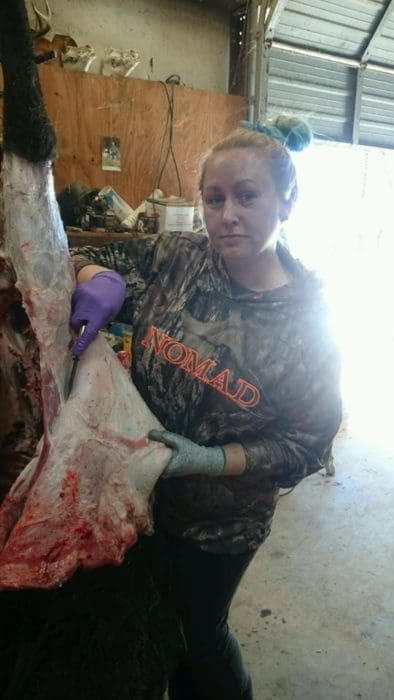
Friend and fellow outdoor writer Kevin Creighton recently went on his first hog hunt, after which he posted the following observations on Facebook:
Watching the skinning/quartering process is essential to the experience… It is my sincere belief that Americans have no idea the amount of effort needed to raise the food we eat, which is why we have a problem with obesity. All it takes for us to eat is money. A hunt will set you straight in such things right quickly, as you’ll soon find out it takes WORK to stalk, shoot, quarter, and then butcher a hog.
No truer words. Over the years – okay, decades – I’ve received a substantial education in the time and effort required for not only a successful hunt but the processing of meat after the shot’s fired.
As a self-taught hunter I discovered early on the dedication and skill it takes to process meat with the smallest loss possible of edible meat. I’m faster today than I was back then but it still takes an enormous chunk of time to get meat squared away. It also takes quality knives, an awesome meat grinder – God bless Weston – and a Foodsaver. Oh, and Leggs Seasoning. Yum.
In the last two weeks my Weston grinder and I have churned through five feral hogs, a handful of turkeys, and a couple of deer, the latter of which have been frozen awaiting my attention since December. Because it isn’t the skinning and quartering that’s such a chore, it’s the meticulous removal of slippery silver and numerous layers of tendons and fat.
Never have I been more grateful for the quality and power of my Weston Commercial Meat Grinder than after seven hours of nonstop slicing, dicing, and grinding (only to hit “repeat” the next day). Grinding by hand or having a lesser-quality electric grinder crap out mid-process would be more than my black heart could take.
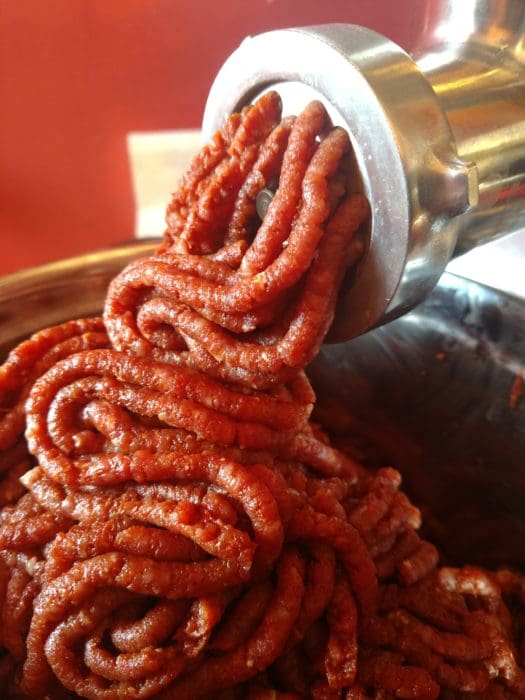
The haters who are so easily angered by images of hunting have a major disconnect in their brains regarding where their plastic-wrapped meat comes from. They don’t understand how much healthier a free-range, wildly-organic – see what I did there – deer is compared to their farm-raised cow. Even so-called organic farm animals can’t hold a clean-eating candle to the awesomeness of the meat I cut from a stack of feral hogs last week.
Think on this: butchers and grocery stores charge extra for what they label “grass-fed” beef. Wait, what? Don’t cows eat grass normally? Well, yeah, but the majority of meat in grocery stores is from feedlot cattle.
Say hello to genetically-modified grains, antibiotics, and heaven knows what else. That’s why so many people fork out an average of $3 more per sixteen-ounce package for the grass-fed stuff. Studies show grass-fed beef is lower in fat and cholesterol because, guess what, cows wandering pastures and grazing are leaner, healthier, and far less likely to get sick and need staggering doses of antibiotics.
You know what’s even better? The meat from deer, hogs, turkeys, and other animals running quite literally wild and free. There’s a catch, though: you have to go out and shoot them and process the meat.
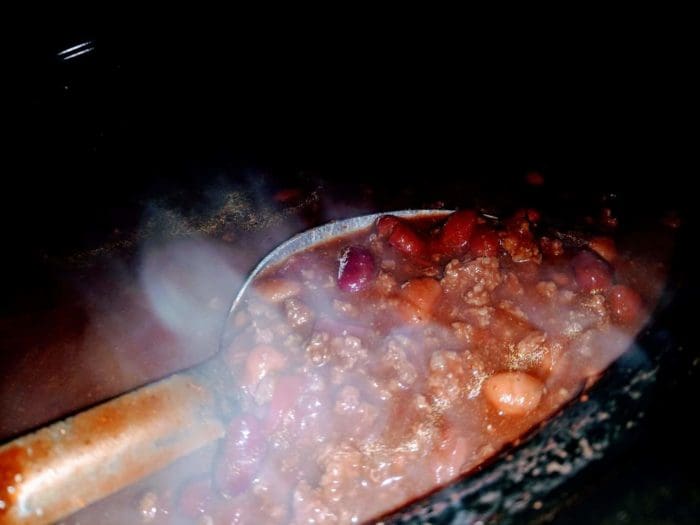
I have a theory, and it’s one I suspect many of you will agree with. People are lazy. We as a culture view hard labor as abhorrent and feel the idea of bloodying our hands and wrenching our backs in order to put a meal on the table is horribly vulgar. Better someone else do the dirty work even if it means our food is not as healthy, right? Wrong.
Teach someone how to process a deer (or a hog, turkey, duck, antelope, bear; whatever). Teach your kids to do it; don’t stop at taking your kid hunting, teach them to process the meat, too. I beg you.
When I’ve casually asked friends and colleagues whether they process their own meat from hunts or pay someone else to do it, most of them admit they don’t do it themselves. The excuses range from how long it takes to their simply not knowing how to do it. They’re just excuses, though.
Time can be taken and skills can be learned. Because, guess what? A sad number of meat-processing places for hunters don’t give you your specific animal back. They hand over the estimated weight from already-processed meat. (Plus, when the zombie apocalypse hits, you want to be able to eat that deer you hunt with pointy sticks, don’t you?)
Take some pride in your hunt and do it yourself. It’s well worth the work. It’s worth it to me, anyway. Not much is more satisfying than watching red ropes of meat fall from my grinder – okay, so it’s even better when it’s finally sizzling in a pan. Use the #fieldtoplate hashtag properly by doing it all yourself, beginning to end. I’m calling you out. Do the work. You’ll be glad you did.

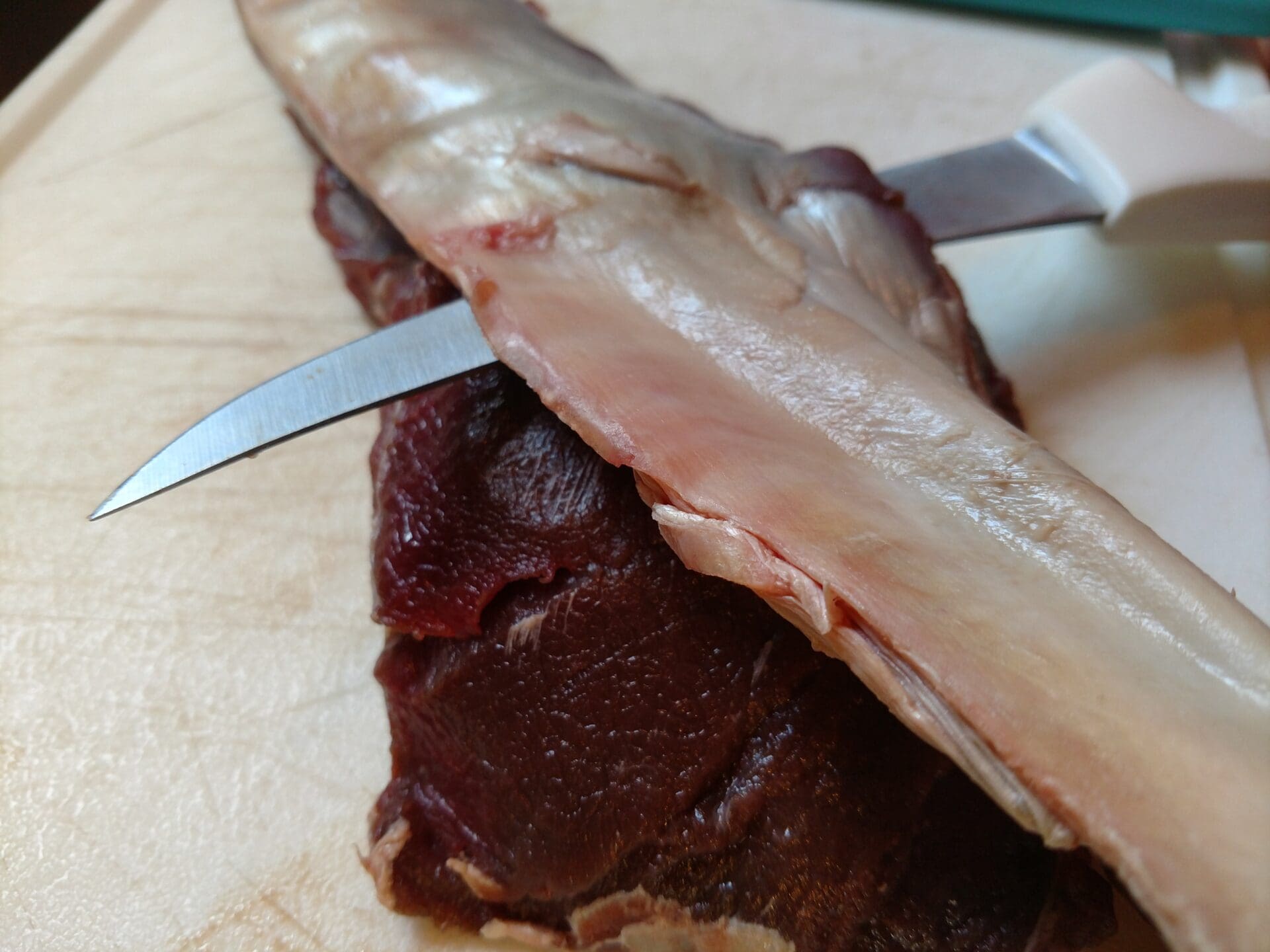

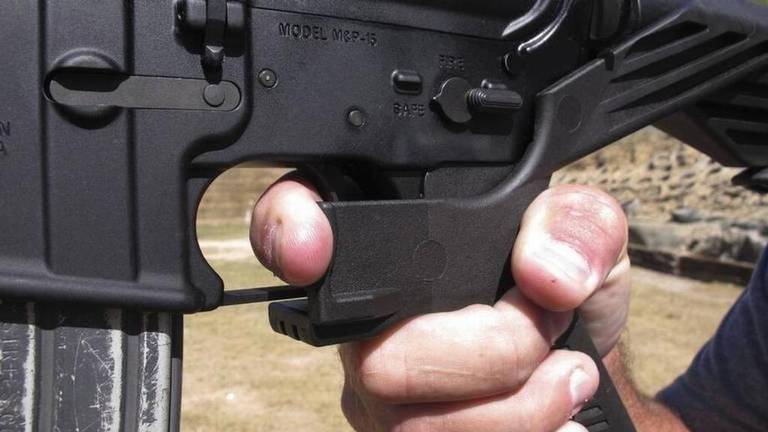
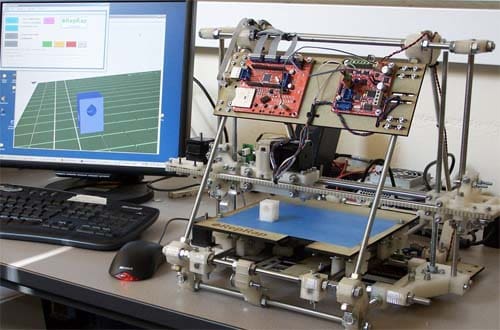
Knowing how to butcher is a very useful skill.
It is a lot of work. One side effect though, is that you appreciate those steaks and burgers so much more.
Last Sunday, I cooked back strap steaks from last falls elk. YUM!
Try McCormics Montreal seasoning.
That Montreal Steak seasoning is good stuff.
I’d like to know how to hunt and how to process the meat myself, but there’s a big investment in proper equipment and an even bigger investment of time and effort, and honestly I’m not motivated enough to do all of it.
It’s not like I don’t appreciate the work that goes into getting meat to the table; I grew up with farmers and hunters, so I’ve seen most of the process…enough to appreciate not having to do all the dirty work myself. 🙂 As Kat says, the laziness is real.
Ing,
“… there’s a big investment in proper equipment [for hunting] …”
That depends on your definition of “big investment”, what you want to do, and your hunting location options.
If you want to hunt small game, you can purchase a new pump-action shotgun or rimfire rifle for less than $300. (And you can get them closer to $200 if you catch a good sale.) Throw in an orange vest and earmuffs for $25 and that is about all the “proper equipment” that you would need.
If you want to hunt for antelope or deer, you can purchase a brand new break-action rifle chambered in .357 Magnum, .44 Magnum, or .243 Winchester for about $270. Add a low-end Weaver scope and rings for about $80 and you are in business for shots at least to 100 yards and quite possibly up to 200 yards (with .243 Winchester chambering). Again, you would also want to add an orange vest and earmuffs for $25.
So, you could have basic equipment for hunting small game for around $300 and medium game for around $400.
The real investment would be identifying a good hunting location and then figuring out where, when, and how to hunt it. If you are fortunate enough to find an excellent location, you could very well come home with wild game after just a single day of hunting.
Yup, the best. McCormics is one of the few which have all natural ingredients, no garbage. I use it in all recipes including my deer jerky (with added sea salt). Look at the ingredients in most jerky seasonings. Enough to gag a maggot. Do it all yourself and keep your game meat healthy.
I’ll skip the MSG. Thanks.
There are no MSG in the McCormics I buy. There use to be, but no longer. That’s why I use no commercial jerky seasonings, they’re loaded with the crap. Here is the list of ingredients in McCormics Montreal Steak seasoning.
Coarse Salt
Spices, including Black Pepper, Red Pepper, Garlic, Sunflower Oil
Natural flavor and extract of Paprika.
It’s so gratifying to hunt, field-dress, butcher and process your own meat… and then cook and eat it. The more you do it, the more “custom” you get to make the process. For instance, I used to make little butterflied medallions out of my venison backstrap, but now I’ve been leaving them in larger 6-8″ chunks, so it’s much easier to get a great sear on the outside without overcooking it.
Take a jalapeño and wrap bacon around that backstrap, thrown on the grill, when the bacon’s done it’s done. Dayum
Amateur. The cool kids are doing the souls vide thing with backstrap. Finish with a sear in a smoking hot cast iron pan on the stovetop.
From the field to the table in this household. Can’t wait to teach the grandkids.
Agree wholeheartedly. My favorite chicken is pheasant.
We get eggs from our quail. They are not free range, we live urban, but they are fed properly and they roam the bag yard garden. They really like minors lettuce.
Those eggs taste much better than store bought eggs.
Nice article Kat. I started hunting when I was six, or seven years old on my Grandpa’s farm in Mississippi. Small game. That one short trip up there in November was the highlight of my year. Looked forward to it more than Christmas. I was all in on the cleaning process. Though my uncle’s tried to keep me back. Tended to get too much hair on the meat. lol Harvested my first whitetail at 13. I was all in on the skinning. Got to tell you though; I hate skinning a wild hog. Done it hundreds of times and the damn things stink to high heaven. Plus their hide will dull a knife before you can say, “Don’t do it!” Now I give them to a buddy for shares on the meat. Still love to eat them.
Sounds great. I’m a half-azzed prepper but don’t hunt. Mebbe I could give it a go…got friend’s a bit downstate who hunt.
Give it a go. Hunting ends up forcing you to get good low-impact exercise. And the mental health benefits of slowing down and getting out into nature are significant as well.
There is also a hidden benefit: hunting (especially medium-game hunting) helps with “stress inoculation” in regard to actual self-defense events. The focus that is necessary and dealing with your adrenaline dump — as well as learning to not have that adrenaline dump in the first place — are all incredibly helpful if you ever have to use a firearm in righteous self-defense.
Oh, and being a good hunter radically improves your “woods craft” and makes you a MUCH more dangerous adversary to tyrannical rulers. Would-be tyrants, if they don’t already realize the danger that skilled hunters represent, should have recurring nightmares about skilled hunters finally deciding “enough is enough”.
Absolutely go for it, you’ll not be sorry. But remember, shooting the animal (large game), is just the beginning of the work. Gutting it is not terribly difficult, getting it back to the truck, skinning it to help keep the meat cool is a little hard work, but the time needed to butcher the meat is the real chore. Takes me a full day in my shop and my back hates me. But, I know what I’ve got and it’s a real pleasure. Not an expert, and I know I lose some meat by doing it myself, but it’s mine from kill to freezer.
Substance, this article has it, many others simply do not. Thanks for the lesson, as a bird Hunter, I remember popping quail heads and plucking feathers before spitting out shot beads at the dinner table:). Good times, close to the Earth ain’t a bad perspective. Keep up the quality articles, RF had a way with words, but pump and dump is not as effective as well-written pieces like this.
agreed on the benefits of hunting and harvesting ones own wildlife. truth for me is the $80 dollars i spend having half a bambi processed is well worth it. i couldn’t care less if it’s ~my~ deer or not, it’s only spiritual for me if i’m having a shore lunch. and my guy’s way better at portioning.
don’t discount metropolitan areas access to live meats. i’ve got nea agora, pollo vivos, zabiha halal and amish free range (animals) all within a few miles. it is where my young ones learned. pick a bunny, tell him how many pieces you want, home to grill.
the szeged chicken rub is the best seasoning i have found. criollo adobo chipotle is also tasty. and don’t forget to slap yo mama, surprisingly picante.
I’ve been vegetarian for 25 years.
I am the FIRST person who will jump down the throats of people who eat meat but think hunting is evil. I am not at all afraid to call them hypocrites, ignorant, or retarded.
I support hunting, fishing, trapping, etc. I don’t eat meat because I don’t want critters to die for my dinner. That’s MY decision for ME, and I’m happy to eat dinner next to somebody with a big rack of ribs or a bloody rare steak. I’m happy to cook meat dishes for other people.
But I will NOT sit quietly while some meat-eating idiot whines that an animal harvested after happy wild life via a quick ethical kill is somehow evil compared to factory farming and forcing animals to live a miserable life of crowding, hormones, and living in their own filth.
I’ve even made a graduate level university ethics instructor uncomfortably question his own vegetarian life decisions by shredding every last one of his arguments in front of a lecture hall. A friend asked if I was going to tell him I was actually a vegetarian too… I said “I don’t see how that matters. He’s wrong about everything he thinks. That’s the only thing relevant in the discussion.”
Sorry I nodded off after the second paragraph of virtue signaling.
I’ve shot deer, hogs, field dressed, skinned and quartered, but have never tried completely processing. I have taken fresh backstrap straight to the grill, but the rest of it is something I’m not good at. It’s better left to those who are.
CJ, completely agree. Up until now, I’ve done it myself. It’s real hard work and I know I don’t get all the meat like a pro would. From now on, I’ll spring for the pro to do it.
Comments are closed.